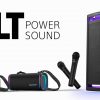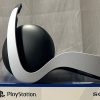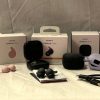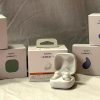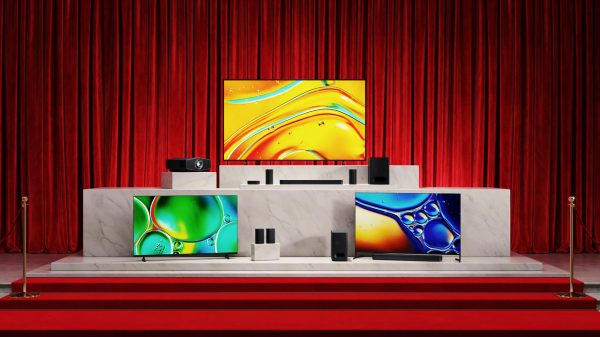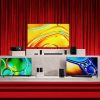Video projectors are a great way to get that movie theater experience at home. Today’s projectors offer increased brightness, more accurate color, flexible installation (such as UST projectors), and all the inputs you need. A growing number even offer smart TV streaming features and built-in audio (although using an external audio system is still the best option for that).
However, despite all the advancements made in video projectors in recent years, one problem, especially when competing with ever-larger screen TVs, is how to incorporate 4K UHD or 8K resolution display capability
The Pixel Squeeze Problem
Incorporating resolutions higher than 1080p is difficult for a projector. TVs have a large surface that can fit the needed number of pixels to display high resolution, but although projectors can display very large images on a screen, the actual imaging chip(s) that contain the needed number of pixels to display a specific resolution is extremely small – usually less than a one inch-sized rectangle.

For reference, here is the number of pixels needed to display specific resolutions to give you an idea of how small the pixels need to be to fit on a less-than-one-inch rectangular imaging chip:
Resolution Designation Horizontal/Vertical Pixels Total Pixels Displayed 8K UHD 7680 x 4320 33.3 million (33 megapixels) 4K Digital Cinema (Projectors) 4096 x 2160 8.8 million (8.8 megapixels) 4K UHD (TVs, UST projectors) 3840 x 2160 8.2 million (8 megapixels) 1080p FHD (Full HD) 1920 x 1080 2.1 million (2 megapixels) 720p HD (Projectors and some TVs) 1280 x 720 921,600 (slightly less than 1 megapixel) 720p HD (TVs) 1366 x 768 1,048,088 pixels total (1 megapixel)
NOTE: Although some 720p TVs technically display 768p HD resolution (1366×768 pixels), they are marketed as 720p TVs.
Squeezing the 8 million pixels needed to display 4K UHD resolution in the size of a video projector imaging chip is very expensive due to the required miniaturization and very precise manufacturing required. As a result, most video projector makers developed what they see as a cost-effective alternative that provides viewers with a similar viewing experience: Pixel Shifting.
Tip: Pixel Shifting goes by different labels depending on the manufacturer. For example, JVC uses the label eShift, Epson uses 4K Enhancement (4Ke) or Pro UHD, and Texas Instruments informally refers to its system (used in DLP-based projectors) as TI UHD or XPR technology. Noted AV journalist, Scott Wilkinson, has coined the term “pixel wiggling” when discussing Pixel Shifting.
How Pixel Shift Works
Here are the essentials of how pixel shifting works.

LCD-based Projectors (Epson)
The most common starting point is that LCD-based projectors incorporate 3 standard 1080p (2.1 million pixels) chips. This means, that at their core, most pixel-shifting projectors are 1080p projectors, but they use pixel shifting to extend that resolution two times or four times, depending on the model.
When these projectors detect a 4K video input signal (such as from Ultra HD Blu-ray and select streaming services), they split the signal into two 1080p images (each with half of the image information). The projector then rapidly shifts each pixel diagonally by a half-pixel width and projects the result onto the screen. The shifting motion is fast (120Hz), it fools the viewer into perceiving the result as approximating the look of a 4K resolution image. This is referred to generically as “Dual Pixel-Shifting”.
Since the pixel shift is only half a pixel, the visual result may be more like 4K than 1080p, even though, technically, there aren’t that many pixels displayed on the screen. In reality, about 4.1 million visual pixels, or twice the number as 1080p are actually displayed.

Select Epson projectors (such as the LS11000 and LS12000 as well as the Q Series projectors introduced in 2024) use “Quad Pixel Shifting”. Instead of only shifting the pixels diagonally, they are shifted horizontally and vertically back and forth at the rate of 240Hz. This process results in the display of 8.3 million pixels, which is a more accurate representation of 4K UHD resolution.
DLP Projectors
Texas Instruments provides two-pixel shift options for use in projectors that use its DLP imaging chips that follow the pattern used by Epson in their LCD-based projectors.
Variation One: Starting with a 1080p resolution DLP chip that is .47 inches in size, instead of shifting the pixels diagonally in one direction to achieve a 4K-like result the pixels are shifted both horizontally and vertically. This results in the appearance of a more accurate 4K-like image as the pixels are shifted at 240Hz.
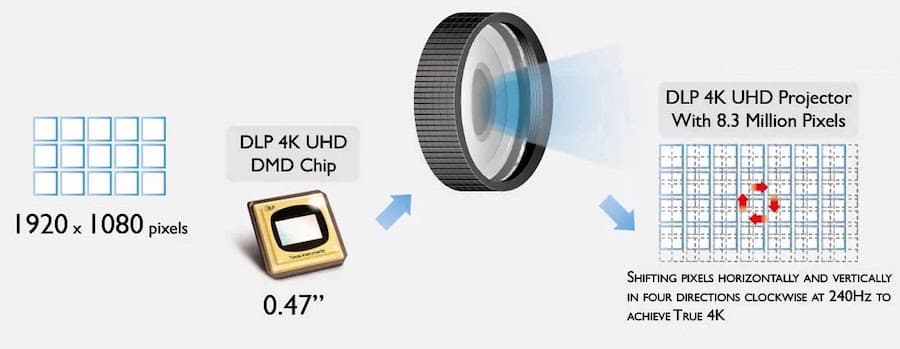
Variation Two: Instead of using a 1080p DLP chip, the Texas Instruments DLP chip is .66 inches in size, with 2716 x 1528 (4.15 million) pixels as the starting point. 4.5 million pixels is twice the number there is in a 1080p chip. This means that the pixels only need to be shifted diagonally at a rate of 120Hz.

When the Pixel Shift process is implemented in a DLP projector using either a 1080p or 2716 x 1528 TI DLP imaging chip, the projector sends out 8.3 million pixels to the screen.
Tip: Pixel Shifting doesn’t work for 3D viewing. If an incoming 3D signal is detected or Motion Interpolation is activated, pixel shifting is disabled so that the 3D image is displayed image in 1080p.
4K vs Faux-K
The pixel shifting process is so fast that it is almost like the pixels are in two places at home time. This isn’t quite Star Trek transporter stuff, but the displayed results are actually pretty impressive, despite nay-sayers claiming that pixel shift is not 4K but “Faux-K”. However, what is important is what the viewer actually perceives, and in reality, just as it is difficult to see the difference between 1080p and 4K UHD on a TV screen at average seating distances, it is even more difficult to see the difference between Native 4K vs Faux-K on a large video projection screen at an average seating distance.
Of course, even though the vast majority of video projectors targeted for consumers use pixel shifting to achieve a 4K UHD viewing experience, there are consumer home theater projectors that do employ imaging chips that incorporate native 4K UHD resolution. Sony’s XW-ES projector line is an example. Also, although JVC predominately offers projectors that employ pixel shifting (e-shift), they also offer up select projectors that have native 4K UHD resolution like the JVC DLA-NP5.

Pixel Shift & 8K
Pixel Shift technology is also used to obtain an 8K resolution viewing experience. For example, JVC offers 8K video projectors using its e-shift technology. In this case, three native 4K (4096 x 2160 – R, G, B – .69-inch) LCOS-based D-ILA imaging chips are used as the starting point and JVC’s latest generation e-shift process (e-shiftX) is used to create the intended 8K display capability.
Pixel Shift vs Upscaling
On the surface you might think that Pixel Shift and Video Upscaling are just two variations of the same thing, but here are the differences.
- Pixel Shift: This process increases the real resolution of a video projector beyond the native resolution of its imaging chip. This is done by doubling or quadrupling the number of pixels visible on the screen.
- Video Upscaling: This process increases the perceived detail of a video source that is lower resolution than the resolution of the display device. This is done by interpolating pixels between the real ones in the source to better match the native resolution of the TV or projector.
Tip: Pixel Shifting enables a video projector to display a higher resolution, while video upscaling uses interpolation to make a source look more detailed.
Related Reading





























